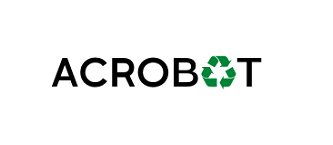Electrification is a necessity as a means of replacing fossil fuels. But for that, we need batteries, and batteries are still the weak link. After all, they contain critical raw materials that need recycling to be sustainable. The ACROBAT consortium has therefore been exploring techniques to enable lithium iron phosphate batteries, or LFP batteries for short, to be recycled effectively.
LFP batteries, a specific type of lithium-ion batteries, are less expensive than other lithium-ion batteries, have a long lifetime, require little to no maintenance, are safe and lightweight and offer improved charging and discharging efficiency. Consequently, they also account for a large part of the battery market and are increasingly being used in vehicles, home batteries and e-bikes/e-scooters. However, their low price consequently forms a major obstacle to recycling. While LFP batteries contain critical raw materials, such as lithium, phosphorus and graphite, their low commercial value makes recycling them currently economically unfeasible. However, since LFP batteries are increasingly being used, over 40% of the Li-ion batteries to be recycled by 2030 will be of the LFP type and the urgent need for a high-performance method to recycle them is pressing.
In the ACROBAT project, Belgium's VITO and KU Leuven, Germany's Fraunhofer ILT, Italy's ENEA and the German battery recycling company Accurec Recycling GmbH have been studying innovative and environmentally friendly processes and separation techniques to maximize the recovery and reintroduction of battery materials into the production process as high-quality products.
Pre-treatment
The initial phase of the project looked at the pretreatment of the batteries during which the valuable fractions are identified for further recycling. Such process was previously developed by Accurec Recycling GmbH for other batteries and has now been adapted to treat LFP batteries. The treatment produced material fractions with less cross contaminations and yielded a so-called ‘black mass’ with a high purity. What makes this project special is that the electrolyte could be recycled, whereby both the lithium salt and the solvent were recovered, which is quite unique in the case of Li-ion batteries.
Recycling
It is also necessary to recycle the cathode and anode materials from the battery since these fine-grained materials contain the critical raw materials and are both present in the black mass after pre-treatment. During the project, the consortium successfully used LIBS technology, an all-optical type of analytical technology, to scan the black mass in a conveyed stream to determine its composition. Unlike others, this technology can also detect lithium and carbon. The partners in the project also succeeded in separating the cathode and anode materials from each other. That way, both graphite (anode) and lithium iron phosphate (cathode) were recovered separately.
Re-use
One of the challenges of this project lay in identifying how cathode material from waste batteries can be re-used. After all, its structure and composition have changed due to all of the preceding stages. Hereto, a hydrothermal process was developed to restore this material by re-introducing the missing lithium ions, significantly reducing the required reaction time. The obtained material can directly be re-used as cathode material in new batteries. Furthermore, it was found that lithium can also be extracted from the black mass and be converted into high-purity lithium hydroxide monohydrate, which is a valuable product for the production of new battery materials.
Success
“This project represents a considerable step forward in the recycling of LFP batteries. We have succeeded in extracting the critical raw materials from used batteries and prepare them for new applications,” said Jeroen Spooren (VITO). “We achieved this success with the consortium and we did so using real waste batteries. We have managed to recycle all components and they now need to undergo further testing in new batteries. Next, upscaling of the processes will be needed.”
In ACROBAT, the partners pooled their expertise
- Accurec Recycling GmbH collected, dismantled and pre-treated the batteries with a process tailored to an input of LFP batteries
- ENEA studied new electrolyte valorisation routes with the aim of recovering organic solvents and lithium-containing salts.
- Fraunhofer ILT developed continuous in-line characterisation of the battery-active material (black mass) to ensure its quality for subsequent recycling steps.
- VITO recovered LFP cathode material and graphite anode material from black mass through a physical separation process
- KU Leuven ensured the recovery of lithium and its conversion into valuable battery-grade lithium hydroxide monohydrate
- VITO recycled spent LFP cathode material into new high-quality LFP material
More info at: www.acrobat-project.eu
And on LinkedIn.



